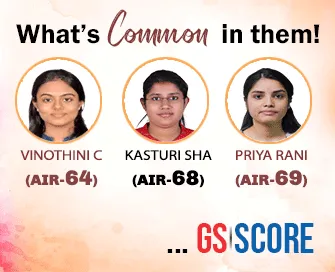

23rd May 2025 (3 Topics)
Context
The reimposition of tariffs on AI-critical hardware components by the United States following the 2024 presidential election has triggered a restructuring of global technology supply chains. As the U.S. and China deepen their technological rivalry, countries like India are emerging as strategic alternatives in the global AI ecosystem.
Tariffs and Global Supply Chain Fragmentation
- Tariff Escalation in the AI Sector
- The U.S. introduced tariffs as high as 27% on key AI components such as specialised accelerators and logic chips in 2025.
- Electronics imports to the U.S. touched $486 billion in 2024, of which $200 billion were related to data processing machines, many from tariff-affected countries like China, Taiwan, Vietnam, and Mexico.
- Impacts on Global AI Infrastructure
- Tariffs are raising infrastructure costs, making the U.S. one of the least cost-efficient locations for building AI capabilities.
- Ironically, some data centre investments are shifting back to China, undermining the intended policy objective of decoupling.
- Case of Supply Chain Disintegration
- The segmentation of supply chains due to tariffs increases inefficiencies and obstructs cross-border technical collaboration, vital for AI innovation.
Economic Implications of Protectionist Trade Policy:
- Distortion of Innovation Ecosystem:
- Empirical studies suggest that a standard deviation increase in tariffs can lead to a 0.4% decline in output growth over five years.
- Deadweight loss arises from reduced trade volumes and diminished consumer and producer welfare.
- Impact on Global Technological Progress:
- AI innovation thrives on access to high-performance computing, cutting-edge hardware, and open research networks.
- Tariffs create a stratification effect, limiting participation to nations with established infrastructure and capital.
- Capital Substitution and Algorithmic Efficiency:
- Companies are increasingly optimising AI systems using algorithmic efficiency and hardware specialisation (e.g., ASICs), reducing dependence on raw computing power.
India's Position in the Restructured Global Order
- Strategic Opportunity as a 'Third Option'
- India is seen as a geopolitical neutral ground amidst U.S.-China tech tensions.
- With IT export growth between 3% to 5.1% and robust AI and digital engineering growth, India is becoming a key stakeholder in the AI economy.
- Strengths and Limitations
- Strengths:
- Large talent pool with 1.5 million engineering graduates annually.
- Government incentives for semiconductor design and fabrication, including multi-billion-dollar fab proposals.
- Limitations:
- Heavy reliance on imported hardware.
- Vulnerability to global supply chain disruptions and tariff shocks.
- India’s Policy Push:
- Programmes like the India Semiconductor Mission and Digital India are pivotal in building domestic resilience.
- Advanced Micro Devices (AMD) $400 million R&D campus in Bengaluru is an example of rising global confidence in India’s AI ecosystem.
Practice Question:
Q. "In light of recent U.S. tariff policies, critically examine how global trade protectionism is influencing the geopolitics of artificial intelligence and India’s strategic position in this context." (250 words)


Context
Following Operation Sindoor, which showcased India’s readiness to employ kinetic responses to terrorism, a renewed discussion has emerged on non-kinetic strategies — particularly the use of international law (lawfare) to hold Pakistan accountable for cross-border terrorism. The article emphasizes that India has yet to fully leverage this legal route despite possessing substantial evidence and treaty obligations in its favor.
Legal Tools Available Under International Conventions:
- Multiple Treaties Signed: India and Pakistan are parties to several global and regional terrorism conventions — including the SAARC Convention, the International Convention for the Suppression of the Financing of Terrorism (ICSFT), and the Terrorist Bombing Convention.
- State Obligations: These treaties oblige signatory states to prevent, prosecute, and penalize terrorism and its financing. For instance, Article 2(1) of International Convention for the Suppression of the Financing of Terrorism (ICSFT) clearly criminalizes terror financing.
- Pakistan’s Violation: Despite these obligations, Pakistan has a documented history of sponsoring and financing terrorism, including the 2008 Mumbai attacks and the recent Pahalgam terror attack (April 2024).
Using the International Court of Justice (ICJ):
- ICJ Jurisdiction Clauses: Many terrorism treaties include compulsory jurisdiction provisions, allowing disputes to be referred to the ICJ. Examples include Articles 20(1) (Terrorist Bombing Convention) and 24(1) (ICSFT).
- Legal Precedent: Ukraine successfully invoked similar provisions against Russia under the ICSFT, setting a valuable legal precedent for India.
- India’s Legal Opportunity: India can similarly file a case to publicize Pakistan’s violations, even if the jurisdiction is contested, as it did in the Kulbhushan Jadhav case.
Challenges and the Way Forward
- Jurisdictional Reservations: Pakistan has opted out of the ICJ’s jurisdiction under ICSFT, and India has a reservation under the Terrorist Bombing Convention, limiting options.
- Strategic Correction Needed: India should withdraw its reservation to the Bombing Convention to enable legal proceedings, especially since Pakistan has accepted jurisdiction under it.
- Beyond Legal Outcomes: Even if the case is not successful on legal grounds, the strategic value lies in global opinion-building and aligning lawfare with India’s counterterrorism narrative.
Practice Question:
Q. "How can international law and institutions like the International Court of Justice be used as instruments of state strategy to counter cross-border terrorism? Illustrate with suitable examples." (250 words)


Context
The Mahmudabad case has sparked a renewed constitutional and political debate on freedom of speech, discriminatory silencing, and the need for responsible public discourse. This comes amid controversial political remarks post Operation Sindoor, cancellations of public speakers based on identity and ideology, and broader questions of constitutional morality in light of India's First Constitutional Amendment (1951).
Constitutional History and Foundational Shifts:
- First Amendment and Expanded Restrictions: The First Amendment (1951), led by Prime Minister Nehru, introduced broader restrictions under Article 19(2), adding public order, morality, and decency to justify state limitations on speech.
- Judicial Interpretations Pre-Amendment: Early Supreme Court rulings such as Romesh Thapar v. State of Madras (1950) provided expansive protections to free speech, often invalidating state-imposed restrictions.
- Shift from Libertarian to Order-Centric Framework: The amendment signalled a paradigm shift from an individual liberty model to a state-driven, stability-oriented model, laying groundwork for future speech regulation and censorship.
Political and Social Dimensions of Free Speech:
- Use of Speech Laws by Different Governments: Governments across political parties have used speech-related laws such as sedition, defamation, and IT Act provisions to curb expression, especially during periods of political instability or dissent.
- Cases Reflecting Speech Suppression: Instances like the Emergency (1975-77), the Aseem Trivedi cartoon case (2012), and controversies over textbook content regarding R. Ambedkar show how legal instruments have been used to control or shape public discourse.
- Access to Platforms and Social Disparities: There have been documented cases where individuals were denied platforms for expression—without formal justification—due to their social background or political affiliations, indicating a lack of uniform access to speech rights.
Institutional and National Discourse Responsibilities:
- Judicial Perspective on National Interest: In a recent judgment, Justice Surya Kant commented on the need for responsible use of speech, especially during times of national tension, indicating that public commentary must be consistent with national resilience.
- Reactions to Operation Sindoor: Public statements by political leaders after Operation Sindoor, including references to the religion and caste of IAF officers and mocking of defence equipment, raised concerns about politicisation of the armed forces.
- Importance of Institutional Decorum: In matters related to defence, judiciary, and constitutional bodies, constitutional experts emphasise the necessity for restraint, respect, and institutional neutrality in speech to maintain democratic stability.
Practice Question:
Q. Examine the constitutional and political implications of the First Constitutional Amendment (1951) in the context of India’s free speech jurisprudence. How do political inconsistency and social discrimination affect the equitable enforcement of Article 19(1)(a) today? (250 words)



